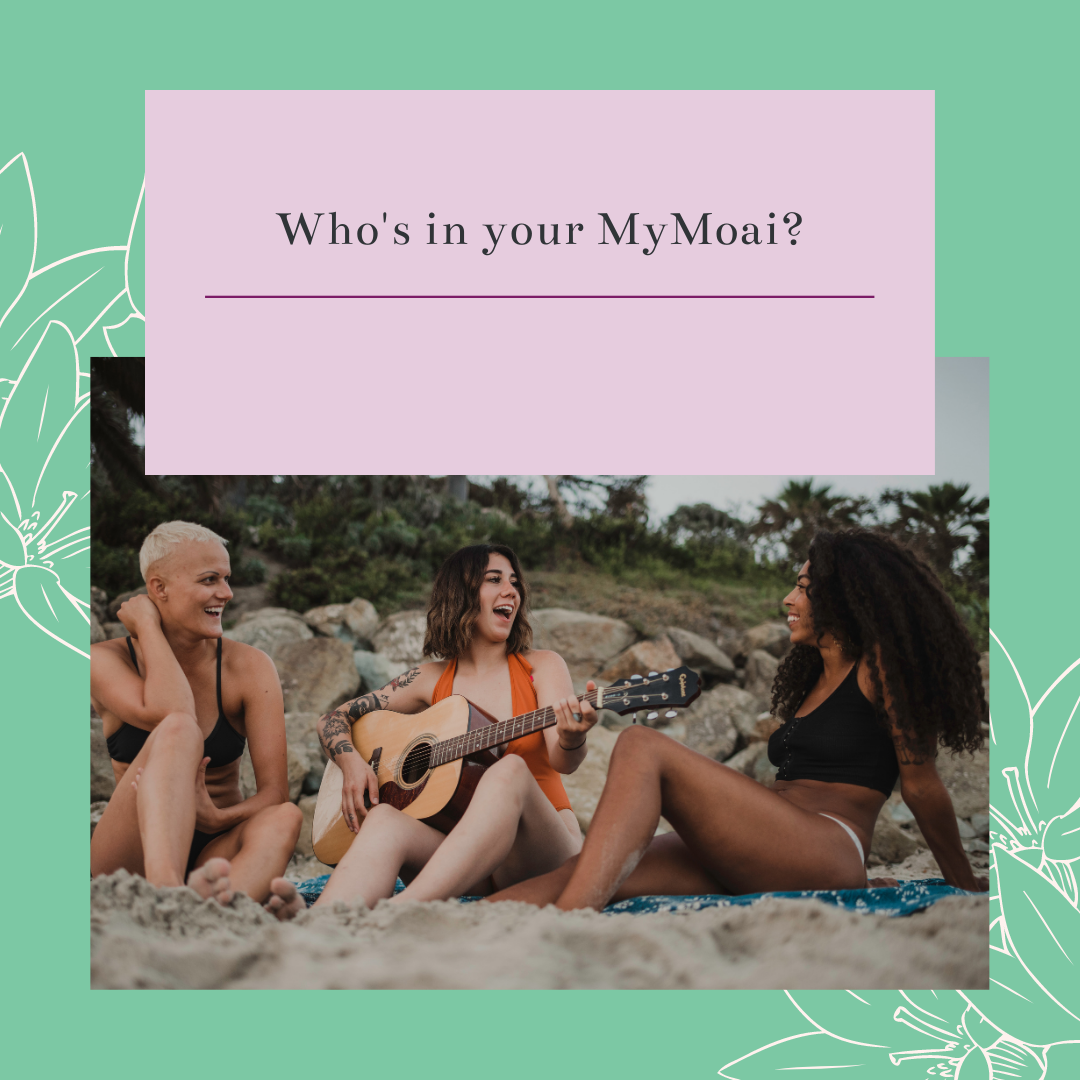What You Should Know About the Meaning Of "Moai"
Who’s In Your Moai?
Subscribers to our newsletter recently got some exciting news: our MyMoai app is entering a beta testing period next month! We're so excited to share the app with you, and we thought we'd start by explaining a little bit of the history behind the name. We’ve already talked about how a Moai can improve your wellbeing, but now we’ll share more about the word Moai.
You see, the word "moai" exists in two different languages and has two different meanings. While our app is named for the Japanese origin of the word, we think it's important to understand, acknowledge, and respect the sacred in all cultures, so we want to talk about the Polynesian origin of the word, too.
Today, we're exploring the distinct and important meanings of the word "moai."
The Japanese Meaning of “Moai”
Several years ago, researchers were studying clusters of people who lived unusually long lives to see what could be learned from them. These clusters are commonly known as “blue zones.” One of the clusters researchers studied was on the island of Okinawa, in Japan, where the average life expectancy for women is 90 years--the longest of anywhere in the world.
Among many factors contributing to this longevity, researchers identified the moai, a group of lifelong friends who provide each other emotional and financial support, grow together and hold each other accountable.
In Japanese, the word "moai" means "meeting for a common purpose." Over half of the residents of Okinawa participate in a moai, and many are in more than one. These groups provide an emotional, logistical, and financial safety net, helping to alleviate stress and worry while providing their members with a sense of purpose and connectedness.
Health researchers in the US have begun exploring how to build moai among people in cities outside of Japan, starting first with what they called “walking moai,” or groups of people who were committed to coming together to walk regularly. The original program asked that members commit to ten weeks with each other, and after that period, most of the groups carried on. Some have now been meeting for several years.
As the Covid-19 pandemic continues to keep people apart physically, many moai have shifted online via Zoom, emails, social media, and other forms of communication. What’s important is staying connected, regardless of how you maintain that connection.
The Rapa Nui Meaning of “Moai”
Rapa Nui is a Polynesian language spoken by the native inhabitants of the island of the same name. Many English-speakers know that island as Easter Island. The island of Rapa Nui is home to world-famous monolithic sculptures of human figures. These sculptures tower over human inhabitants and visitors with a range of features and expressions.
These sculptures are also known as moʻai.
There are over 900 known moʻai on the island of Rapa Nui, most of them carved from a kind of volcanic stone made of compressed ash. These moʻai were carved to represent the spirits of deceased ancestors and were also powerful status symbols for the chiefs who commissioned them. The moʻai are enormous, on average 13 feet high and 5 feet wide at the base, and carving and moving them required advanced artistic and engineering skill. They were carved mostly between the years of 1250 and 1800, and they stood tall until almost all of them mysteriously toppled some time before 1868 (oral history and archaeological evidence suggest earthquakes were primarily responsible).
As with so many native populations, though, contact with Europeans proved deadly. The slave trade came to Rapa Nui beginning in 1862. Those inhabitants left behind came into contact with Christian missionaries who brought new diseases, forbade the wearing of traditional clothing, and eventually forced their relocation to a small portion of the island so the rest of the land could be farmed.
Today, Rapa Nui families and public agencies on the islands work together to protect, preserve, and share the moʻai with visitors and educational institutions. These special sculptures represent centuries of cultural significance, and we hope preservation efforts continue to protect them for generations to come.
We hope you enjoyed this journey into the origins of the word “moai” and why we chose it for our MyMoai app’s name. We’ll be back soon with an in-depth discussion of how the Japanese concept of moai influenced how we designed our app. Stay tuned!
Have you encountered a moai or a moʻai out in the world? Do you like how we chose the MyMoai name? We’d love to hear about your experiences in the comments.
P.S. - You can save and share this post on Pinterest using this image:


